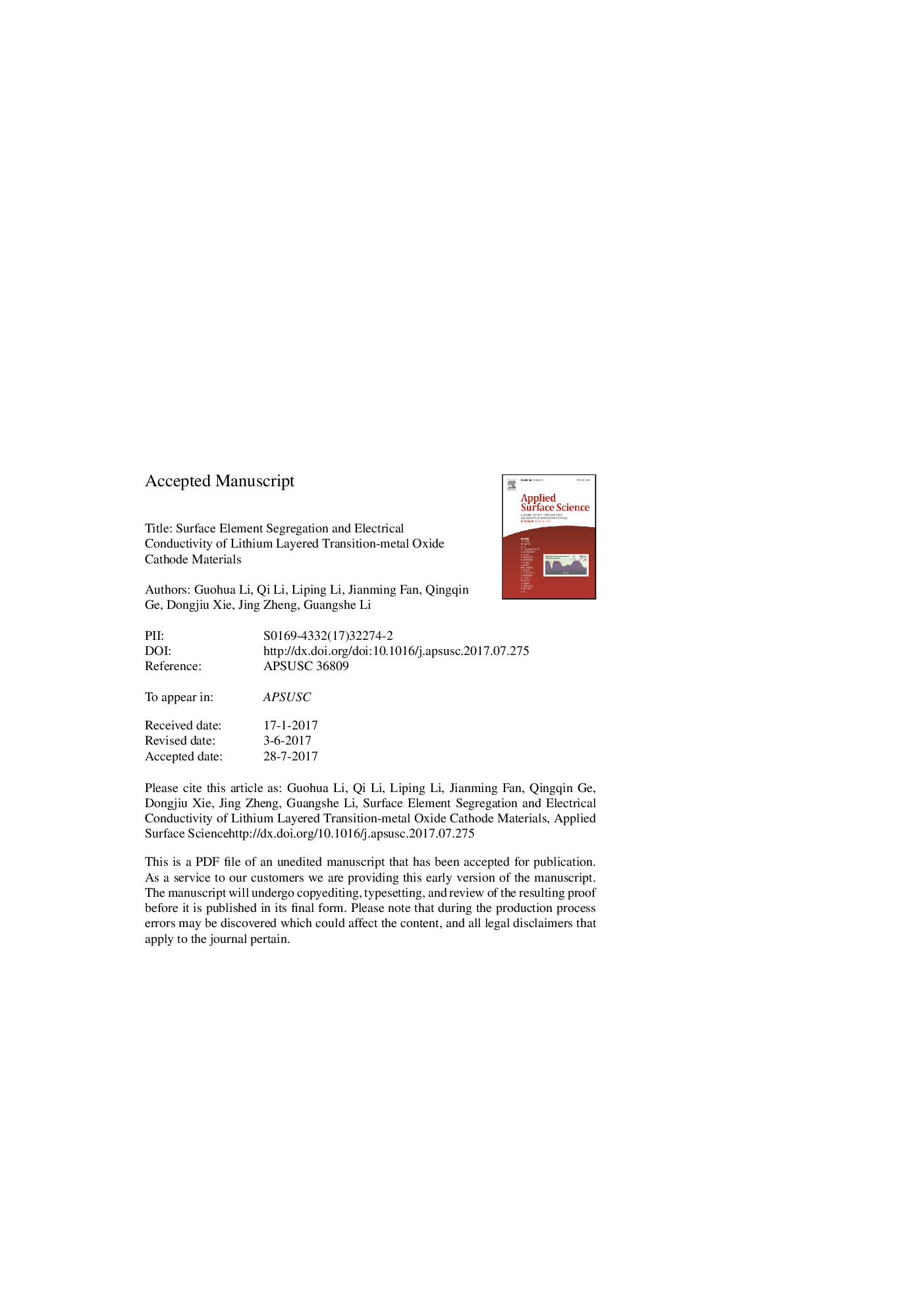| Article ID | Journal | Published Year | Pages | File Type |
|---|---|---|---|---|
| 5346782 | Applied Surface Science | 2018 | 26 Pages |
Abstract
Surface element segregation and electric conductivity are critical in determining lithium storage ability of given cathode materials, which are poorly understood and not correlated with the structure and overall performance. Here, layered lithium transition-metal oxides, one of the state-of-the-art cathode materials for lithium ion batteries are chosen to study. A serial of LiNixCo1-2xMnxO2 samples were prepared via a solid state reaction and subsequently characterized by XRD in conjunction with structural refinement, XPS depth profiling, and AC impedance spectroscopy. Slightly different expansion rates are observed for lattice parameters (a and c/3) with varying of Ni content, which is attributed to the increase of average metal-ion radius and an increase of eg electron that enhances the columbic repulsion between transition metal and oxygen atoms. XPS depth profiling results show that surface composition is significantly deviated from bulk, in which Ni and Mn atoms tend to enrich in the surface region, while Co element is relatively deficient. Further, surface element segregation is alleviated by the increase of Ni/Mn content. Moreover, increasing the Ni/Mn content also raises the activation energy of bulk conduction.
Related Topics
Physical Sciences and Engineering
Chemistry
Physical and Theoretical Chemistry
Authors
Guohua Li, Qi Li, Liping Li, Jianming Fan, Qingqin Ge, Dongjiu Xie, Jing Zheng, Guangshe Li,
